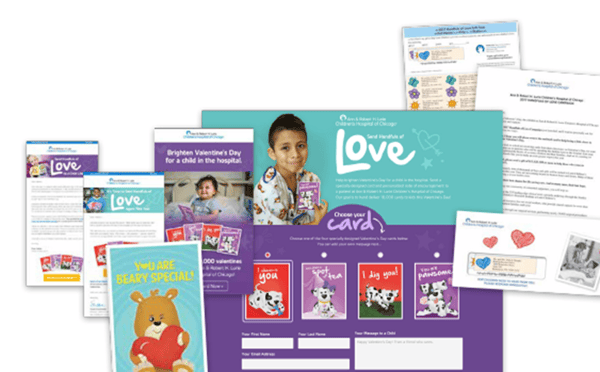We like to say that websites act as the virtual front door to your cause, welcoming donors into your organization and providing valuable information and experiences that lead to donations and deeper relationships.
But for hospitals, there’s an added layer that often complicates the online fundraising strategy: the patient experience.
For most hospitals, the top priority on their website is to provide information to current and future patients about their work, research and previous success stories. This means fundraising strategy often takes a back seat.
If you’re a hospital fundraiser who is struggling to balance important patient initiatives with your online fundraising plans, you’re not alone. Here’s how we’ve helped our clients navigate this:
Find common ground
The mistake many of us make when planning fundraising campaigns for hospitals is keeping the strategy completely separate from all other marketing initiatives. When this happens, fundraising goals will almost always take the back seat.
Instead, when planning out your year, identify areas where messaging, patient experience and general marketing can intersect with fundraising campaigns. If you think big picture and align your approach with other hospital messaging priorities, the smaller, tactical needs of your fundraising campaign, like website real estate, will fall into place.
This won’t happen 12 months out of the year or across every single thing you do, but by aligning major campaigns with your hospital’s marketing initiatives, you will:
- See more success in getting much needed fundraising real estate on your website (and in other channels, too)
- Deliver a better experience and get more impressions thanks to other promotions the hospital has planned
- Create a surround-sound campaign that has a bigger impact for everyone involved
See it in action
Lurie Children’s Hospital was looking for ways to better align their fundraising strategy with hospital initiatives. Together, we worked to identify existing marketing plans around holidays, medical care and research that the fundraising team could put their efforts behind.
For Valentine’s Day, we crafted a campaign where donors could learn about the great experience Lurie provides their patients and also sign up to send patients Valentine’s cards. This aligned with Lurie’s patient experience initiatives—but also served as a great lead generation tool for the fundraising team.

At year-end, the marketing and fundraising team worked together once again to align their strategic messaging. The fundraising approach won with a great presence on their website, and the marketing team won because the surround-sound approach provided a great multiplier effect for their message.

There was also more awareness within the local market, and impressions and response even trickled down to other channels, like direct mail.
Rather than siloing their campaigns, the partnership between fundraising and marketing helped the hospital use their promotion dollars to provide an omnichannel experience for all audience members. And it paid off—because of their collaboration, there was a 60% lift on total annual giving for the year-end campaign.
If you’re a hospital fundraiser in the planning stages for the new year, think about ways you can incorporate your organization’s existing priorities into your campaigns. A collaborative approach will help lift all programs.
Looking for more? Check out these blogs:
- Optimize your hospital’s grateful patient program with these simple tips
- Help your hospital’s mid-level program reach its full potential
- Website performance matters—and you’re probably failing at it
- 12 donation page designs you’ll want to copy






Leave a comment: